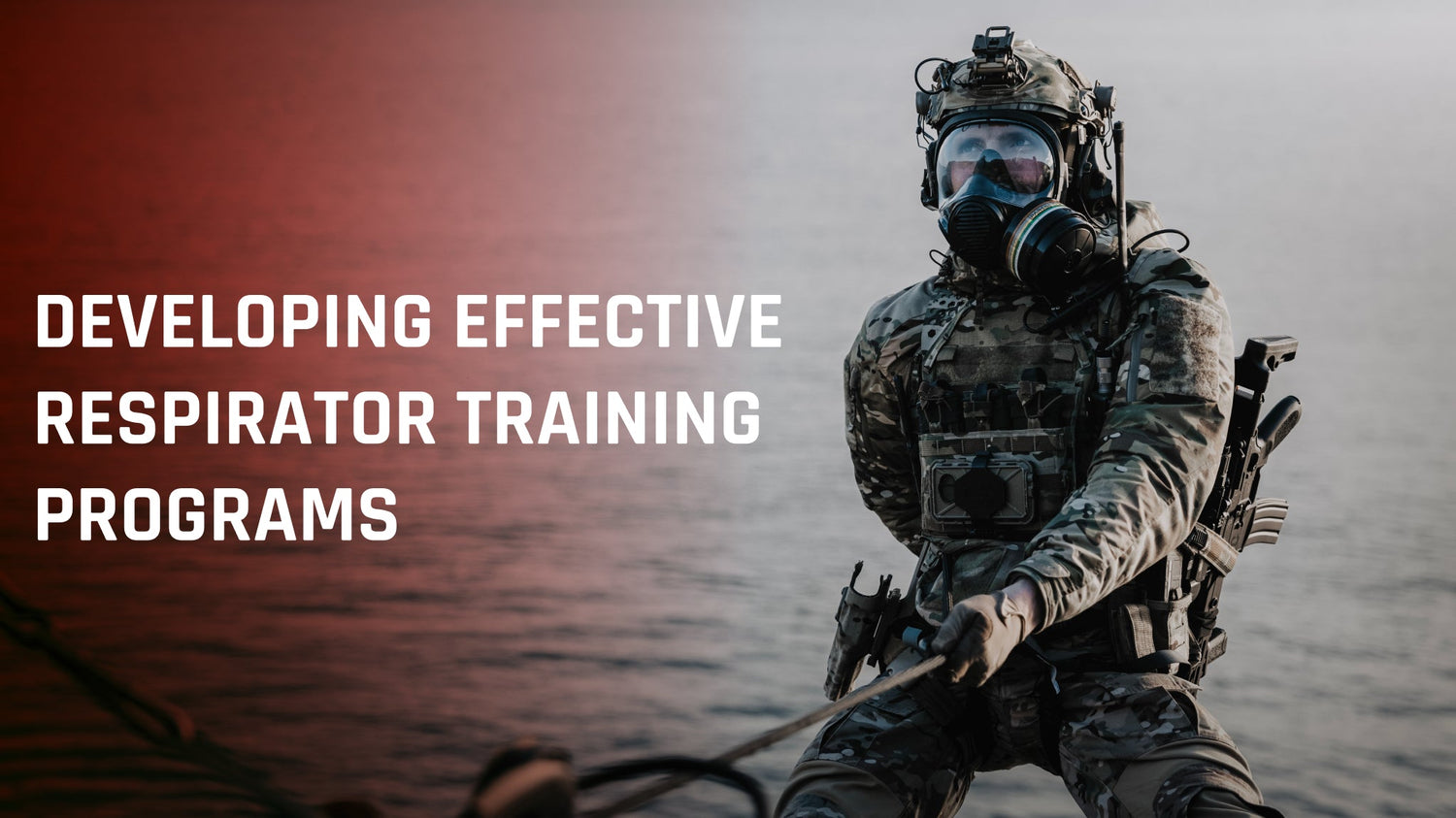Ensuring the proper use of respirators is paramount in industrial settings. Developing effective training programs is the key to empowering workers and creating a safer work environment. In this blog post, we'll explore the essential components of comprehensive respirator training, delve into successful case studies, and provide tips for ongoing education and reinforcement.
What are the components of a training program?
Theoretical Instructions:
Start with a solid theoretical foundation covering the types of respirators, their applications, and the hazards they protect against. Emphasize the importance of a proper fit, understanding filtration mechanisms, and recognizing when a respirator is needed.
Practical Applications:
Hands-on training is crucial. Conduct practical sessions on donning and doffing respirators, achieving a proper seal, and conducting seal checks. Provide real-world scenarios to simulate potential workplace hazards, allowing trainees to apply their knowledge in a practical context.
Emergency Protocols:
Trainees should be well-versed in emergency procedures. This includes swift and effective responses to malfunctions, understanding exit routes, and implementing rescue protocols. Emergency drills can reinforce preparedness and highlight the importance of quick, decisive action.
Case Studies of Successful Training Initiatives:
Case Study 1: Manufacturing Industry
In a manufacturing plant where workers were exposed to various airborne contaminants, a comprehensive training initiative on respirator usage was implemented. The initiative included:
Training Sessions: Regular training sessions were conducted to educate workers on the types of respirators available, their proper usage, fitting, and seal checks.
Hands-on Practice: Workers were given hands-on practice sessions to ensure they could correctly don and doff the respirators, adjust straps for a secure fit, and perform seal checks.
Hazard Awareness: Training emphasized the importance of recognizing workplace hazards that necessitate respirator use and understanding the limitations of respirators.
Results: The training initiative significantly improved workers' knowledge and confidence in using respirators. Compliance with respirator protocols increased, leading to a safer work environment with reduced exposure to airborne contaminants.
Click on the below button to check out Parcil Safety's catalogue for the manufacturing industry.
SHOP NOW
Case Study 2: Construction Industry
In a construction company where workers faced exposure to dust, fumes, and other airborne hazards, a targeted training initiative was implemented:
Tailored Training Modules: Training modules were tailored to address specific respiratory hazards encountered in construction activities, such as silica dust from cutting and grinding operations.
Toolbox Talks: Regular toolbox talks were conducted to reinforce key concepts related to respiratory protection, hazard awareness, and proper respirator usage.
Fit Testing: Fit testing sessions were organized to ensure that workers' respirators fit properly and provided adequate protection.
Results: The training initiative led to increased awareness among construction workers about the importance of respiratory protection. Fit testing helped identify workers who needed different sizes or models of respirators, leading to better overall protection on the job site.
Click on the below button to check out Parcil Safety's listings for the construction industry.
SHOP NOW
Case Study 3: Healthcare Industry
In a healthcare facility where workers were at risk of exposure to infectious agents, a training initiative focused on respiratory protection was implemented:
Infection Control Training: Respiratory protection training was integrated into broader infection control training programs to ensure consistency and relevance to healthcare workers' roles.
Proper Donning and Doffing: Emphasis was placed on proper donning and doffing procedures for respirators, particularly in high-risk situations such as caring for patients with respiratory infections.
Simulation Exercises: Simulation exercises were conducted to simulate real-life scenarios where respiratory protection was needed, allowing healthcare workers to practice using respirators in a controlled environment.
Results: The training initiative enhanced healthcare workers' preparedness to respond to infectious disease outbreaks while ensuring their own safety. Improved compliance with respiratory protection protocols contributed to a safer healthcare environment for both workers and patients.
Tips for Ongoing Education and Reinforcement:
Regular Refresher Courses:
Schedule periodic refresher courses to keep knowledge current. Leverage digital platforms for webinars and e-learning modules, making ongoing education seamless and accessible.
Feedback Mechanisms:
Establish open channels for employee feedback. Actively seek insights into challenges faced with respirators, enabling tailored adjustments to training programs based on real-world experiences.
Harnessing Technological Advancements:
Embrace emerging technologies like virtual reality (VR) simulations to elevate training experiences. These innovations not only engage trainees effectively but also bridge the gap between theoretical knowledge and practical application.
Encourage Peer-to-Peer Learning:
Foster a culture of peer-to-peer learning where experienced workers mentor newer employees on respiratory safety practices. Encourage open dialogue and collaboration to create a supportive learning environment.
Online Resources:
Leverage online resources such as training videos, webinars, and interactive modules to supplement in-person training. Provide employees with access to these resources so they can refresh their knowledge at their own pace.
In summary, developing effective respirator training programs requires a multifaceted approach that combines theory, practical application, and ongoing reinforcement. By investing in comprehensive training initiatives and leveraging lessons learned from successful case studies, we can empower workers to protect themselves and their colleagues from respiratory hazards. Together, let's cultivate a safer and healthier work environment for all!
Learn about 'Safety Protocols and Best Practices with Industrial Respirators' in Parcil Safety's User-Friendly Blog.




















Leave a comment
All comments are moderated before being published.
This site is protected by hCaptcha and the hCaptcha Privacy Policy and Terms of Service apply.